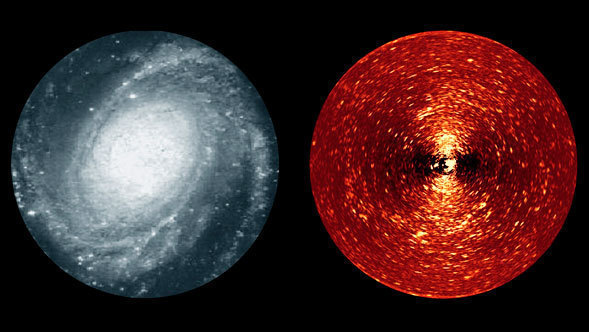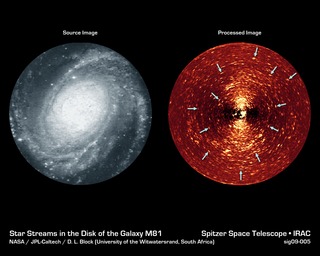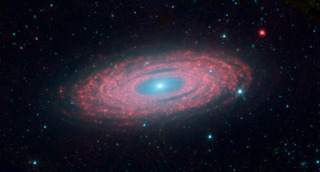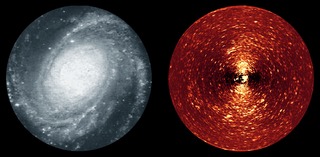
Credit: NASA/JPL-Caltech/D. L. Block (Univ. of Witwatersrand, South Africa)
Observation • April 30th, 2009 • sig09-005
sig09-005
Here we see two different views of the spiral galaxy, Messier 81. On the left is an image taken in blue light, while on the right is a specially-processed version of an image taken with the Spitzer Space Telescope's infrared array camera (IRAC) at 4.5 microns. The processed image reveals myriads of tiny arclets, a representative sample of which are arrowed. Each of these arclets represents a young star stream in the disk of the galaxy.
Observing the galaxy in the infrared is the only way to directly see the youngest stars, since the shroud of dust and gas that surrounds them is opaque to visible light, but transparent in the IR. Even so, the unprocessed infrared image was still dominated by the light from the smooth, older disk of the galaxy rather than the faint tracks of young stars. Further processing using a mathematical technique called Fourier filtering allowed the team to pick out structures on the physical scale on which star formation occurs, revealing these streams of young stars flowing away from their stellar nurseries.
M81 is one of several galaxies that were observed in this way. Taken together, this sample is the first time that young star streams have been discovered in the disks of galaxies millions of light years distant, filling in the "missing link" in the evolution of galaxy disks.
About the Object
- Name
- Bode's Galaxy • Messier 81 • M81 • NGC 3031
- Type
- Galaxy > Type > Spiral
- Distance
- 12,000,000 Light Years
- Redshift
- -0.000113







